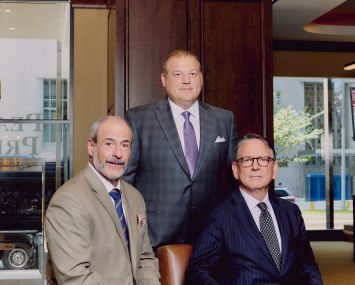Presented By: PACE Equity
C-PACE Financing: Funding for Carbon Mandate Compliance and Beyond
By: Tricia Baker
By PACE Equity January 27, 2025 4:33 am
reprints
State and local governments are staying the course in the climate change battle – they are turning global climate goals into actionable local goals. They’re doing things like introducing carbon mandates for existing buildings, investing in community renewable energy projects, and elevating building codes for new construction projects. Meanwhile, businesses are rising to the challenge by innovating cleaner technologies, choosing higher efficiency equipment, and setting ambitious goals to cut emissions. It’s a team effort, and it’s starting to make a difference at the real estate level.
A key strategy for local and state efforts is the implementation of local building performance standards (BPS) which are emerging as a tool for reducing greenhouse gas emissions from the built environment. Over 40 cities will have these standards in place by 2026, when building owners will be required to address energy efficiency and emissions reduction measures. These locally-set policies (by both cities and states) outline energy and emissions benchmarks for buildings. Most municipalities require Energy Use Intensity (EUI) limits be met; others are requiring carbon emission limits.
Roughly 75 percent of U.S. buildings are 20 years old and have never been renovated. For those buildings, achieving BPS compliance will likely require upgrading HVAC equipment, upgrading windows & lighting, improving roofs, and ensuring airtightness. Making the improvements can help the property meet the EUI or carbon emission limits, as well as improve NOI and even result in a premium in terms of the valuation.
Commercial Property Assessed Clean Energy (C-PACE) financing is a game-changing solution that makes it easier for property owners to fund energy efficiency upgrades and other decarbonizing projects with low rates and long amortization terms. At a time when property owners and developers are seeking practical, scalable solutions to meet BPS compliance requirements, innovative financing in C-PACE is standing out.

Act Now to Begin Benefitting
Buildings account for nearly 40% of global energy-related carbon dioxide emissions, making them a focus in the fight to reverse climate change. Building performance standards address this issue by requiring existing buildings to meet specific energy performance criteria over time. These standards are already implemented in states like Colorado, Maryland, and Washington, as well as cities like New York and Washington, D.C. Other cities and states are following closely behind.
For example, New York City’s Local Law 97, enacted as part of the Climate Mobilization Act, sets aggressive carbon emission limits for buildings larger than 25,000 square feet. This policy incentivizes retrofitting with energy-efficient technologies and adopting renewable energy solutions to meet these targets.
Similarly, Washington, D.C.’s Building Energy Performance Standards (BEPS) require privately-owned buildings over 50,000 square feet to meet minimum energy efficiency thresholds. Implemented in 2021, this policy aims to reduce energy consumption in the District’s buildings by 50% by 2032. Property owners have multiple pathways for compliance, such as completing energy audits, retrofitting systems, or participating in financial programs like C-PACE.
On a state level, Colorado’s Building Performance Standards (BPS) Program became the first statewide initiative of its kind in 2022. The program mandates progressively stricter energy and emissions targets for commercial, multifamily, and public buildings larger than 50,000 square feet through 2050. Financing programs like C-PACE financing, enable property owners to meet these ambitious goals.
The Many Uses of C-PACE Financing
Once building owners understand the need to upgrade their buildings to meet the carbon mandates, they start to see other key benefits: tenants like upgraded buildings because they want lower utility costs and healthy indoor spaces, and insurers like upgraded buildings since they want upgrades for resiliency as well as energy. C-PACE financing is a natural fit for achieving BPS compliance when investment is necessary; it provides property owners the capital to fund energy efficiency and resiliency upgrades to the building, renewable energy projects, and other eligible improvements. Unlike traditional loans, C-PACE is repaid through a special assessment on the property tax bill, which is typically spread over 20 to 30 years. This structure aligns the cost of upgrades with the long-term savings they generate, making it an attractive option for building owners. The C-PACE assessment is even transferable to a new owner in the event of a property sale.
Providers of C-PACE financing will continue to emphasize the program’s unique advantages for BPS renovations, but at the same time property owners are finding it an all-around flexible financing option including for new construction and recapitalization. In addition, specialized financing solutions like the CIRRUS Low Carbon program from PACE Equity, are tailored for high-performance buildings where owners qualify for reduced financing rates whether they are developing, renovating, or recapitalizing.

Building performance standards don’t come with financing solutions. C-PACE fills that need for the broad spectrum of commercial buildings that will be addressing compliance in the next few years.
•Cost-Effective Compliance: C-PACE financing eliminates the need for large upfront capital expenditures, enabling property owners to implement energy efficiency measures with low-rate financing. Buildings that meet the requirements can often also take advantage of local utility rebate programs and federal tax incentives.
•Accelerated Decarbonization: By facilitating investments in advanced technologies such as high-efficiency HVAC systems, building envelope improvements, and LED lighting, C-PACE delivers on its remit to support the broader goal of reducing carbon emissions across the commercial real estate sector.
•Enhanced Value: Energy-efficient buildings are attractive to tenants and buyers. Resilient buildings are attractive to insurers. Upgrading your building enhances your property’s valuation.
•Investing in Local Economies: Retrofitting projects create jobs, contributing to economic growth while advancing environmental objectives.
If your building is one of the 75% of commercial buildings that are in need of renovations, take a look at the wins from C-PACE that bridge the gap between ambition and affordability. C-PACE is not just a tool for compliance; it’s a catalyst for transformative change in the built environment. For policymakers and environmental advocates, embracing C-PACE financing is crucial to achieving decarbonized communities and a more resilient planet. For property owners, C-PACE is a long-term, non-recourse financing option that delivers flexibility and low rates over a 20–30-year term.


